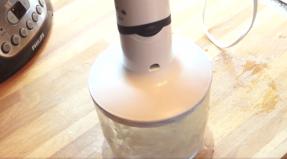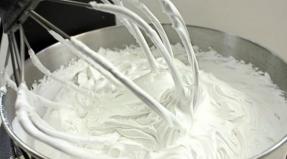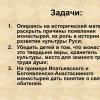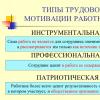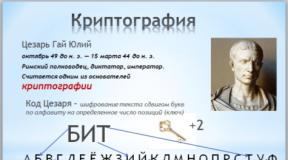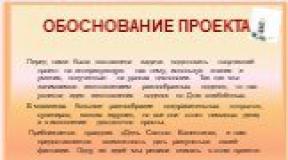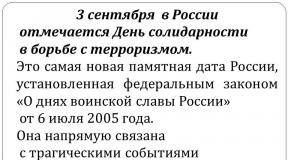Berotek for children instructions for use. Instructions for the use of berotec n. Dosage of Beroteka for children
Composition and form of release
in dark glass dropper bottles, 20 ml (1 ml = 20 drops); in a pack of cardboard 1 dropper bottle.
in aerosol cans with a mouthpiece, 10 ml (200 doses); 1 bottle in a box.
Description of the dosage form
Solution for inhalation: clear colorless or almost colorless liquid, free of particles. The smell is almost imperceptible.
pharmachologic effect
pharmachologic effect- bronchodilating.Selectively stimulates beta 2 -adrenergic receptors. Relaxes the smooth muscles of the bronchi and blood vessels and counteracts the development of bronchospastic reactions caused by the influence of histamine, methacholine, cold air and allergens (immediate hypersensitivity reactions). Immediately after administration, fenoterol blocks the release of inflammatory mediators and bronchial obstruction from mast cells. In addition, with the use of fenoterol in higher doses, an increase in mucociliary clearance was noted.
The beta-adrenergic effect of the drug on cardiac activity (increase in strength and heart rate) is due to the vascular action of fenoterol, stimulation of beta 2 -adrenergic receptors of the heart, and when using doses exceeding therapeutic ones, stimulation of beta 1 -adrenergic receptors. Tremor is the most common adverse effect when using beta agonists.
The drug reduces the contractile activity and tone of the myometrium.
Pharmacodynamics
Fenoterol prevents and quickly relieves bronchospasm of various origins. The onset of action after inhalation is 5 minutes, maximum is 30-90 minutes, duration is 3-6 hours.
Pharmacokinetics
Depending on the inhalation method and the inhalation system used, about 10-30% of the active substance released from the aerosol preparation after inhalation reaches the lower respiratory tract while the rest is deposited in the upper respiratory tract and swallowed. As a result, some of the inhaled fenoterol enters the digestive tract. After inhalation of 1 dose of the drug, the degree of absorption is 17% of the administered dose. The absorption is biphasic - 30% of fenoterol hydrobromide is rapidly absorbed at T 1/2 of 11 minutes, and 70% is absorbed slowly at T 1/2 of 120 minutes.
After oral administration, about 60% of fenoterol hydrobromide is absorbed. Time to reach C max of blood plasma is 2 hours. Plasma protein binding is 40-55%. It is metabolized in the liver. It is excreted by the kidneys and bile in the form of inactive sulfate conjugates.
With parenteral administration of fenoterol, hydrobromide is excreted, respectively, in a three-phase model with T 1/2 - 0.42 minutes, 14.3 minutes and 3.2 hours. Biotransformation of fenoterol hydrobromide in humans occurs exclusively by conjugation with sulfates, mainly in the intestinal wall.
Fenoterol hydrobromide can penetrate unchanged through the placental barrier and enter breast milk.
Indications for Berotek® N
Prevention and relief of bronchospasm in bronchial asthma, chronic obstructive bronchitis, pulmonary emphysema. Prevention of exercise asthma. Symptomatic treatment bronchial asthma and chronic obstructive pulmonary disease.
Contraindications
Hypersensitivity, hypertrophic obstructive cardiomyopathy, tachyarrhythmias,
heart disease, aortic stenosis, decompensated diabetes mellitus, thyrotoxicosis, glaucoma, threatened abortion, pregnancy (I trimester).
Application during pregnancy and lactation
Contraindicated in the first trimester of pregnancy, the administration of the drug is possible in the II-III trimester of pregnancy and during breastfeeding only if the expected effect of therapy outweighs the potential risk to the fetus or child.
Side effects
From the side of the central nervous system: minor tremor, nervousness; rarely - headache, dizziness, violation of accommodation; in isolated cases - a change in the psyche.
From the side of cardio-vascular system: tachycardia, palpitations (especially in patients with aggravating factors); rarely (when used in high doses) - decrease in DBP, increase in SBP, arrhythmia.
From the side respiratory system: in rare cases - cough, local irritation; very rarely - paradoxical bronchospasm.
From the digestive tract: nausea, vomiting.
Allergic reactions: rarely - rash, angioedema of the tongue, lips and face, urticaria.
Others: hypokalemia, increased sweating, weakness, myalgia, convulsions, urinary retention.
Interaction
Beta-adrenergic and anticholinergics, xanthine derivatives (theophylline) can enhance the bronchodilatory effect. The simultaneous appointment of other beta-adrenergic agonists that enter the systemic circulation of anticholinergics or xanthine derivatives (for example, theophylline) may lead to increased side effects.
A significant weakening of the bronchodilatory action is possible with the simultaneous administration of beta-blockers.
Simultaneous use with MAO inhibitors and tricyclic antidepressants enhances the effect of Berotek N.
Inhalation of halogenated hydrocarbon anesthetics (halothane, trichlorethylene, enflurane) can enhance the effect of Beroteka N on the cardiovascular system.
Against the background of the use of Beroteka N, hypokalemia may develop, which can increase with the simultaneous administration of xanthine derivatives, steroids and diuretics. This fact should be given special attention in the treatment of patients with severe obstructive airway diseases.
Hypokalemia can increase the risk of arrhythmias in patients receiving digoxin. In addition, hypoxia can increase the negative effect of hypokalemia on heartbeat... In such cases, it is recommended to monitor the level of potassium in the blood serum.
Method of administration and dosage
Inhalation
Solution for inhalation. Adults and children over 12 years old, - 0.5 ml (0.5 mg - 10 drops), in severe cases - 1-1.25 ml (1-1.25 mg - 20-25 drops), in extremely severe cases (under medical supervision) - 2 ml (2 mg - 40 drops).
Prevention of exercise asthma and symptomatic treatment of bronchial asthma and chronic obstructive pulmonary disease- 0.5 ml (0.5 mg - 10 drops) up to 4 times a day.
Children 6-12 years old (body weight 22-36 kg) for relief of an attack of bronchial asthma- 0.25-0.5 ml (0.25-0.5 mg - 5-10 drops), in severe cases - 1 ml (1 mg - 20 drops), in extremely severe cases (under medical supervision) - 1 , 5 ml (1.5 mg - 30 drops).
Prevention of exercise asthma and symptomatic treatment of bronchial asthma and other conditions with reversible airway narrowing- 0.5 ml (0.5 mg - 10 drops) up to 4 times a day. Children under 6 years of age (body weight less than 22 kg) (only under medical supervision) - about 50 mcg / kg per dose (0.25-1 mg - 5-20 drops) up to 3 times a day.
The recommended dose is diluted with saline to a volume of 3-4 ml immediately before use. The dose depends on the method of inhalation and the quality of the nebulization. If necessary, repeated inhalations are carried out at intervals of at least 4 hours.
Spray can. Acute attack of bronchial asthma- 1 dose, if necessary, inhalation can be repeated after 5 minutes. The next appointment of the drug is possible no earlier than after 3 hours.If there is no effect and additional inhalations are required, you should immediately apply for medical care to the nearest hospital.
Prevention of exercise asthma and symptomatic treatment of bronchial asthma and other conditions accompanied by reversible airway narrowing- 1-2 doses per dose, but not more than 8 doses per day.
To obtain the maximum effect, it is necessary to use the metered aerosol correctly.
Before using the metered aerosol for the first time, shake the can and press the bottom of the can twice.
Each time you use a metered aerosol, the following rules must be observed:
1. Remove the protective cap.
2. Take a slow, deep breath.
3. While holding the balloon, clasp the tip with your lips. The cylinder must be directed upside down.
4. Making the deepest possible inhalation, simultaneously quickly press the bottom of the balloon until one inhalation dose is released. Hold your breath for a few seconds, then remove the tip from your mouth and exhale slowly. Repeat steps to obtain the second inhalation dose.
5. Put on the protective cap.
6. If the aerosol can has not been used for more than 3 days, before use, press the bottom of the can once until a cloud of aerosol appears.
The balloon is designed for 200 inhalations. After that, the cylinder should be replaced. Although some content may remain in the balloon, the amount of drug released by inhalation may be reduced.
The balloon is opaque, so the amount of the drug in the balloon can only be determined in the following way: after removing the protective cap, the balloon is immersed in a container filled with water. The amount of the drug is determined depending on the position of the balloon in the water.
The handpiece should be kept clean and, if necessary, can be rinsed in warm water. After using soap or detergent, rinse the handpiece thoroughly with clean water.
A warning: The plastic adapter for the mouth is specially designed for the metered-dose aerosol Berotek N and serves for accurate dosage of the drug. The adapter must not be used with other metered aerosols. Do not use metered-dose tetrafluoroethane-containing aerosol Berotek N with any other adapters, except for the adapter supplied with the cylinder.
The contents of the cylinder are under pressure. The cylinder must not be opened and heated above 50 ° C.
Overdose
Symptoms: tachycardia, palpitations, arterial hyper- or hypotension, increased pulse pressure, anginal pain, arrhythmias, flushing, tremors.
Treatment: the appointment of sedatives, tranquilizers, in severe cases - intensive therapy. Cardioselective beta-blockers are recommended as antidotes. However, one should remember about the possible increase in bronchial obstruction under the influence of beta-blockers and carefully select the dose for patients suffering from bronchial asthma or chronic obstructive pulmonary disease.
Precautionary measures
It is prescribed with caution in diabetes mellitus, recent myocardial infarction, severe diseases of the cardiovascular system, hyperthyroidism, pheochromocytoma.
With the use of beta 2 -agonists, severe hypokalemia may develop.
Acute, rapidly worsening dyspnea (shortness of breath) should immediately consult a doctor.
It should be borne in mind that the use of large doses for arresting an attack for a long time can cause an uncontrolled worsening of the course of the disease and necessitate correction of the basic anti-inflammatory therapy with inhaled corticosteroids.
Particular care should be taken in severe bronchial asthma. this effect can be enhanced by the concomitant use of xanthine derivatives, glucocorticoids and diuretics. In addition, hypoxia can enhance the effect of hypokalemia on the heart rate. In such situations, regular monitoring of serum potassium levels is recommended.
special instructions
When using the new form of metered-dose aerosol Berotek N for the first time, patients may notice that to taste new drug somewhat different from the previous dosage form containing freon. When moving from one form to another, patients should be warned of a possible change in taste. It should also be reported that the drugs are interchangeable and that taste is not related to the safety and efficacy of the new drug.
Other sympathomimetic bronchodilators should be administered concurrently with Berotek N only under medical supervision.
Manufacturer
Boehringer Ingelheim Pharma KG, a division of Boehringer Ingelheim International GmbH, Germany (metered dose inhalation aerosol).
Boehringer Ingelheim Italy S.p.A., Italy (solution for inhalation).
Storage conditions of the drug Berotek® N
At a temperature not exceeding 25 ° C.Keep out of the reach of children.
Shelf life of the drug Berotek® N
solution for inhalation 1 mg / ml - 5 years.
aerosol for inhalation dosed 100 mcg / dose - 3 years.
Do not use after the expiration date printed on the package.
Synonyms for nosological groups
| ICD-10 heading | Synonyms of diseases according to ICD-10 |
|---|---|
| J44 Other chronic obstructive pulmonary disease | Allergic bronchitis |
| Asthmatic bronchitis | |
| Astmoid bronchitis | |
| Allergic bronchitis | |
| Asthmatic bronchitis | |
| Obstructive bronchitis | |
| Disease of the bronchi | |
| Difficulty sputum separation in acute and chronic respiratory diseases | |
| Cough in inflammatory diseases of the lungs and bronchi | |
| Reversible bronchial obstruction | |
| Reversible obstructive airway disease | |
| Obstructive bronchial disease | |
| Obstructive pulmonary disease | |
| Obstructive bronchitis | |
| Restrictive lung pathology | |
| Spastic bronchitis | |
| Chronic lung disease | |
| Chronic nonspecific lung disease | |
| Chronic obstructive pulmonary disease | |
| Chronic obstructive bronchitis | |
| Chronic obstructive airway disease | |
| Chronic obstructive pulmonary disease | |
| J45 Asthma | Exercise asthma |
| Asthmatic conditions | |
| Bronchial asthma | |
| Mild bronchial asthma | |
| Bronchial asthma with difficulty in sputum discharge | |
| Severe bronchial asthma | |
| Bronchial asthma of physical effort | |
| Hypersecretory asthma | |
| Hormone-dependent form of bronchial asthma | |
| Cough with bronchial asthma | |
| Relief of asthma attacks in bronchial asthma | |
| Non-allergic bronchial asthma | |
| Nocturnal asthma | |
| Nocturnal asthma attacks | |
| Exacerbation of bronchial asthma | |
| Bronchial asthma attack | |
| Endogenous forms of asthma | |
| J46 Status asthmaticus | Asthmatic attack |
| Asthmatic status | |
| J98.8.0 * Bronchospasm | Bronchospasm in bronchial asthma |
| Bronchospasm when exposed to an allergen | |
| Bronchospastic reactions | |
| Bronchospastic conditions | |
| Bronchospastic syndrome | |
| Diseases accompanied by bronchospastic syndrome | |
| Reversible bronchospasm | |
| Spasmodic cough |


Recipe (international)
Rp .: Sol. "Berotecum" 20 ml
D. S. Inhalation.
Recipe (Russia)
Rr .: Aer. Fenoteroli 100mkg / d - 10ml
S. 1 dose 3 times a day.
Rr .: Sol. Fenoteroli 0.1% - 20ml
S. 20 drops, 2 times a day, inhalation
Prescription form - 107-1 / y
Active substance
Fenoterol (Fenoterol)
pharmachologic effect
Berotek is a drug of the group of selective beta2-adrenergic agonists. The preparation contains an active ingredient - fenoterol hydrobromide - medicinal substance that interacts with the stimulatory GS protein and activates adenylate cyclase. Active ingredient the drug enhances the synthesis of cAMP, which stimulates the activation of protein kinase A, which phosphorylates target proteins of smooth muscle cells.
Due to this action of the drug, phosphorylation of the kinase of the light chain of myosin occurs, the hydrolysis of phosphoinosine is inhibited and the opening of calcium-activated fast potassium channels is stimulated. The drug also prevents the release of inflammatory mediators from mast cells. Thus, the drug helps to relax the smooth muscle layer of the bronchi and blood vessels, prevents the development of bronchial spasm. different etiology, including those caused by histamine, methacholine, allergens and cold air.
After inhalation, about 17% of the active substance is absorbed into the systemic circulation. The absorption of the drug after inhalation occurs in two stages: about 30% of the active substance is rapidly absorbed (half-life is 11 minutes), about 70% is absorbed slowly (half-life is 2 hours). The level of fenoterol in blood plasma does not affect the severity of the bronchodilating effect of the drug. A certain amount of the drug after inhalation enters gastrointestinal tract, however, due to the effect of the first passage through the liver, the bioavailability of oral fenoterol is no more than 1.5% and does not have a clinically significant effect. The active ingredient, after entering the systemic circulation, penetrates the hematoplacental barrier and is excreted in breast milk.
Mode of application
For adults:
Bronchial asthma attacks and other conditions accompanied by reversible airway obstruction
Prescribe by inhalation 0.5 ml (10 drops = 500 μg fenoterol hydrobromide), which in most cases is sufficient for immediate relief of the attack; if it is necessary to re-prescribe the drug up to 4 times / day, you should consider the possibility of reducing the individual dose, depending on the effectiveness of the nebulizer.
In severe cases (for example, for most patients admitted to ICU), higher doses of 1-1.25 ml (20-25 drops = 1000-1250 mcg fenoterol hydrobromide) may be required.
In extremely severe cases, under the supervision of a physician, doses up to 2 ml (40 drops = 2000 μg fenoterol hydrobromide) can be administered.
For kids:
Children aged 6 to 12 years (weighing about 22-36 kg)
Bronchial asthma attacks and other conditions with reversible airway obstruction
Prescribe by inhalation 0.25-0.5 ml (5-10 drops = 250-500 μg fenoterol hydrobromide), which in most cases is sufficient for immediate relief of symptoms; if it is necessary to re-prescribe the drug up to 4 times / day, consider the possibility of reducing the individual dose depending on the effectiveness of the nebulizer.
In severe cases (for example, in most cases of treatment in a hospital setting), higher doses of 1 ml (20 drops = 1000 μg fenoterol hydrobromide) may be required.
In extremely severe cases, under the supervision of a physician, the drug can be administered in a dose of up to 1.5 ml (30 drops = 1500 μg fenoterol hydrobromide).
Prevention of attacks of bronchial asthma due to physical exertion
Prescribe by inhalation 0.5 ml (10 drops = 500 μg of fenoterol hydrobromide) before exercise.
Children under 6 years of age (weighing less than 22 kg)
Due to the limited information about this age group, treatment is carried out only under the supervision of a doctor, prescribing the drug in the following dose: inhalation about 50 μg / kg per dose (= 0.05 ml or 1 drop) / kg body weight, but not more than 0.5 ml (10 drops) per dose up to 3 times / day.
Indications
- Relief of attacks of bronchial asthma;
- Prevention of exercise asthma;
- Symptomatic treatment of bronchial asthma or other conditions accompanied by reversible - Narrowing of the airways (including obstructive bronchitis). In patients with bronchial asthma and chronic obstructive pulmonary disease responding to GCS therapy, the need for concomitant anti-inflammatory therapy should be considered;
- As a bronchodilator before inhalation of other drugs (antibiotics, mucolytics, GCS);
- For carrying out bronchodilator tests in the study of the function of external respiration.
Contraindications
Tachyarrhythmia;
Hypertrophic obstructive cardiomyopathy;
Hypersensitivity to fenoterol hydrobromide and other components of the drug.
The drug should be prescribed with caution in diabetes mellitus, recent myocardial infarction, severe diseases of the cardiovascular system, arterial hypertension, arterial hypotension, intestinal atony, hyperthyroidism, pheochromocytoma, hypokalemia.
- From the musculoskeletal system: the frequency is unknown - muscle spasm, myalgia, muscle weakness.
Release form
Dosed aerosol, 10 ml in stainless steel cans with a dispensing device, 1 can in a cardboard box.
ATTENTION!
The information on the page you are viewing was created for informational purposes only and does not promote self-medication in any way. The resource is intended to familiarize healthcare workers with additional information about certain medications, thereby increasing their level of professionalism. The use of the drug "" necessarily involves a consultation with a specialist, as well as his recommendations on the method of application and dosage of the medicine you have chosen.
Catad_pgroup Anti-asthma drugs
Berotek H - instructions for use
Registration number:
P N011310 / 01Trade name of the drug:
Berotek® NInternational non-proprietary name:
fenoterolDosage form:
metered dose inhalation aerosolComposition:
1 inhalation dose contains:active substance: fenoterol hydrobromide 100 μg (0.100 mg)
Excipients:
citric acid anhydrous 0.001 mg
purified water 1,040 mg
ethanol absolute 15.597 mg
tetrafluoroethane (HFA 134a, propellant (tetrafluoroethane)) 35.252 mg
Description:
Transparent, colorless or light yellow or light brownish liquid, free from suspended particles, placed under pressure in a metal aerosol can with a dosing valve and a mouthpiece.Pharmacotherapeutic group:
bronchodilator-ß 2 -selective ATX adrenergic agonist:ATX code:
R03AC04Pharmacological properties
Pharmacodynamics
Berotek N is an effective bronchodilator for the prevention and relief of bronchospasm attacks in bronchial asthma and other conditions accompanied by reversible airway obstruction, such as chronic obstructive bronchitis (with or without pulmonary emphysema).
Fenoterol is a selective stimulant of ß 2 -adrenergic receptors in the therapeutic dose range. Stimulation in 1-adrenergic receptors occurs when using higher doses of the drug. Binding to ß 2 -adrenergic receptors activates adenylate cyclase through the stimulatory GS-protein, followed by an increase in the formation of cyclic adenosine monophosphate (cAMP), which activates protein kinase A, the latter depriving myosin of the ability to bind with actin, which causes relaxation of smooth muscles.
Fenoterol relaxes the smooth muscles of the bronchi and blood vessels and protects against bronchoconstrictor stimuli such as histamine, methacholine, cold air and allergens (early response). In addition, fenoterol inhibits the release of bronchoconstrictor and pro-inflammatory mediators from mast cells. An increase in mucociliary clearance was demonstrated after the use of fenoterol (at a dose of 0.6 mg).
Due to the stimulating effect on ß 1 -adrenergic receptors, fenoterol can have an effect on the myocardium (especially in doses exceeding therapeutic ones), causing an increase in heart rate and increase.
Fenoterol quickly relieves bronchospasm of various origins. Bronchodilation develops within a few minutes after inhalation and lasts 3-5 hours. Fenoterol also protects against bronchoconstriction, which occurs under the influence of various stimuli, such as exercise stress, cold air and allergens (early response).
Pharmacokinetics
After inhalation, 10-30% of the active substance released from the aerosol preparation reaches the lower respiratory tract, depending on the inhalation technique and the inhalation system used. The rest is deposited in the upper respiratory tract and in the mouth and then swallowed.
The absolute bioavailability of fenoterol after inhalation of the metered aerosol of Berotek N is 18.7%. The absorption of fenoterol from the lungs is two-phase: 30% of the dose is absorbed quickly (half-life 11 minutes), and 70% - slowly (half-life 120 minutes). The maximum plasma concentration after inhalation of 200 μg fenoterol is 66.9 pg / ml (tmax 15 min).
After oral administration approximately 60% of the dose of fenoterol hydrobromide is absorbed. The absorbed amount undergoes an extensive first phase of metabolism in the liver, resulting in an oral bioavailability of approximately 1.5%, and its contribution to plasma fenoterol concentration after inhalation is small.
Plasma distribution of fenoterol after intravenous administration adequately describes the 3-component pharmacokinetic model (half-life is t α = 0.42 min, t β = 14.3 min and t γ = 3.2 h). The volume of distribution of fenoterol at a constant concentration after intravenous administration is 1.9-2.7 l / kg, binding to plasma proteins is from 40 to 55%.
Fenoterol is extensively metabolized in the liver by conjugation to glucuronides and sulfates. The swallowed portion of the fenoterol dose is metabolized predominantly by sulfation. This metabolic inactivation of the parent substance begins already in the intestinal wall.
Fenoterol is excreted by the kidneys and bile in the form of inactive sulfate conjugates. Biotransformation, including excretion with bile, undergoes the main part - about 85%. Excretion of fenoterol in the urine (0.27 L / min) corresponds to approximately 15% of the mean total clearance of the systemically available dose. The volume of renal clearance is indicative of tubular secretion of fenoterol in addition to glomerular filtration. After inhalation, 2% of the dose is excreted through the kidneys unchanged within 24 hours.
Fenoterol hydrobromide in unchanged form can cross the placental barrier and pass into breast milk.
Indications for use
- Asthma attacks or other conditions with reversible airway obstruction, Chronical bronchitis, chronic obstructive pulmonary disease.
- Prevention of bronchial asthma attacks due to physical exertion.
Contraindications
Hypersensitivity to fenoterol or to any of the excipients of the drug.Hypertrophic obstructive cardiomyopathy, tachyarrhythmia.
Berotek N v dosage form metered dose inhalation aerosol is not used in children under 4 years of age.
Carefully
In the following conditions, Berotek N should be used only after a careful assessment of the benefits / risks of treatment, especially if the maximum recommended doses are used:
hyperthyroidism, hypokalemia, insufficiently controlled diabetes mellitus, recent myocardial infarction (within the last 3 months), severe organic diseases heart and blood vessels, such as chronic heart failure, ischemic disease heart disease coronary arteries, heart defects (including aortic stenosis), severe lesions of the cerebral and peripheral arteries, pheochromocytoma.
Since information on the use of the drug in children under 6 years of age is limited, treatment is carried out with caution, only under the supervision of a doctor.
Application during pregnancy and during breastfeeding
Results before clinical research combined with existing experience clinical use the drug did not reveal any adverse events during pregnancy. However, the drug should be used with caution during pregnancy, especially in the first trimester, if the potential benefit to the mother outweighs the potential risk to the fetus.Consideration should be given to the possibility of an inhibitory effect of fenoterol on the contractile activity of the uterus.
Preclinical studies have shown that fenoterol passes into breast milk. The safety of the drug during breastfeeding has not been studied. Care should be taken when using the drug during breastfeeding. There are no clinical data on the effects of fenoterol on fertility. Preclinical studies of fenoterol have shown no adverse effects on fertility.
Method of administration and dosage
Doses for adults and children over 6 years old
In most cases, one inhalation dose is sufficient to relieve bronchospasm. If there is no relief of breathing within 5 minutes, you can repeat the inhalation.
If the effect is absent after two inhalation doses, and additional inhalations are required, you should immediately seek medical attention. The maximum allowable dose during the day is 8 inhalation doses.
1-2 inhalation doses before exercise, up to 8 inhalation doses per day.
In children aged 6 to 12 years, Berotek N should be used only after consultation with a doctor and under adult supervision.
Doses for children from 4 to 6 years old
Bronchial asthma attacks and other conditions accompanied by reversible airway obstruction
To stop bronchospasm, one inhalation dose is enough.
If there is no effect, you should immediately seek medical attention.
Prevention of attacks of bronchial asthma due to physical exertion
1 inhalation dose before exercise, up to 4 inhalation doses per day.
In children aged 4 to 6 years, Berotek N should be used only after consultation with a doctor and under adult supervision.
Mode of application
To achieve the maximum effect, it is necessary to use the metered aerosol correctly.
To prepare a new inhaler for use, remove the protective cap, turn the inhaler upside down and make two injections into the air (double-click on the bottom of the can).
Each time you use the inhaler, the following rules must be observed:
Side effect
Like all other types of inhalation treatment, Berotek N can cause local irritant symptoms.From the immune system
hypersensitivity
On the part of metabolism and nutrition
Hypokalemia, including severe hypokalemia
From the side nervous system
agitation, nervousness, tremor, headache, dizziness
On the part of the cardiovascular system
myocardial ischemia, arrhythmia, tachycardia, palpitations, increased systolic blood pressure lowering diastolic blood pressure
From the respiratory system
paradoxical bronchospasm, cough, irritation of the larynx and pharynx
From the side digestive system:
nausea, vomiting
Skin and subcutaneous tissue
hyperhidrosis, skin reactions such as rash, pruritus, urticaria
Musculoskeletal system and related tissue diseases.
muscle spasm, myalgia, muscle weakness
Overdose
Symptoms
In overdose, the expected symptoms are those caused by excessive beta-adrenergic stimulation. The most pronounced are tachycardia, palpitations, tremors, decrease or increase in blood pressure, increase in pulse pressure, angina pectoris, arrhythmias, facial flushing. Metabolic acidosis and hypokalemia have also been observed with the use of fenoterol in doses in excess of the recommended doses for the approved indications.
Treatment
Treatment with Berotek N should be discontinued. Should be monitored acid-base balance and electrolyte balance.
For treatment, sedatives are used; in severe cases, intensive symptomatic therapy is carried out.
Ss-blockers (preferably selective ß 1 -blockers) can be prescribed as specific antidotes; at the same time, one should take into account the possibility of increasing bronchial obstruction and carefully select the doses of these drugs in patients with bronchial asthma.
Interaction with other medicinal products
ß-Adrenergic drugs, anticholinergics, xanthine derivatives (such as theophylline), cromoglycic acid, glucocorticosteroids and diuretics can increase the effect and side effects fenoterol.Hypokalemia caused by ß 2 -agonists can be exacerbated by concomitant therapy with xanthine derivatives, corticosteroids, and diuretics. This should be especially taken into account in patients with severe airway obstruction (see section " special instructions").
A significant decrease in bronchodilation with the simultaneous use of fenoterol and ß-blockers.
Β-adrenergic receptor agonists should be used with caution in patients receiving monoamine oxidase inhibitors or tricyclic antidepressants, which can enhance the action of β-adrenergic receptor agonists.
Inhalation of general anesthetic agents such as halothane, trichlorethylene, and enflurane increases the likelihood of cardiovascular exposure to β-adrenergic agonists.
special instructions
Paradoxical bronchospasm
Like others inhalation drugs, Berotek N can cause paradoxical bronchospasm, which can be life threatening. If paradoxical bronchospasm occurs, the drug should be immediately canceled and replaced. alternative therapy.
Cardiovascular effects
Effects on the part of the cardiovascular system can be observed with the use of sympathomimetic drugs, including the drug Berotek N. There are data from post-registration studies and publications in the literature on rare cases of myocardial ischemia associated with the use of beta-agonists.
Patients with underlying severe heart disease (for example, ischemic heart disease, arrhythmia, or severe heart failure) receiving Berotek N should be warned to seek medical attention if they experience chest pain or worsening heart disease.
Consideration should be given to assessing symptoms such as dyspnea and chest pain, as they can be respiratory or cardiac.
Hypokalemia
Potentially severe hypokalemia can develop with ß 2 -agonist therapy. It is recommended to take special care in severe bronchial asthma, since hypokalemia can be potentiated by concomitant therapy with xanthine derivatives, glucocorticosteroids and diuretics. In addition, hypoxia can increase the effect of hypokalemia on heart rate. Hypokalemia can lead to an increased susceptibility to arrhythmias in patients receiving digoxin.
In such situations, it is recommended to monitor serum potassium levels.
Acute progressive dyspnea
Patients should be advised to seek immediate medical attention in case of acute, rapidly worsening shortness of breath.
Regular use
- Relief of attacks of bronchial asthma (symptomatic treatment) is preferable to regular use of the drug;
- Patients should be evaluated to determine the need for the appointment or intensification of anti-inflammatory treatment (for example, inhaled glucocorticosteroids) in order to control airway inflammation and prevent delayed lung damage.
Concurrent use with sympathomimetic and anticholinergic bronchodilators
Other sympathomimetic bronchodilators should be used in conjunction with Berotek N only under medical supervision. Anticholinergic bronchodilators can be inhaled simultaneously with Berotek N.
Influence on the results of laboratory tests
The use of the drug Berotek N can lead to positive test results for the presence of fenoterol in studies of drug abuse for non-medical indications, for example, due to increased physical capabilities in athletes (doping).
Impact on the ability to manage vehicles and mechanisms
Studies of the effects of the drug on the ability to drive vehicles and use mechanisms have not been conducted.
However, patients should be advised that symptoms such as dizziness have been observed during clinical trials. Therefore, it is recommended to be careful when driving or using machinery.
Release form
Inhalation aerosol dosed 0.1 mg / dose. 10 ml (200 doses) in a metal aerosol can with a dosing valve and a mouthpiece with a protective cap with the company logo. A can with instructions for use in a cardboard box.Storage conditions
At a temperature not higher than 25 ° C.Keep out of the reach of children.
Shelf life
3 years.Do not use the drug after the expiration date indicated on the package.
Vacation conditions
Dispensed by prescriptionManufacturer
Name and address legal entity, in whose name the registration certificate was issued
Boehringer Ingelheim International GmbH, Germany,
Name and address of the place of production medicinal product
Boehringer Ingelheim Pharma GmbH & Co.KG, Germany
Germany, 55216, Ingelheim am Rhein, Bingerstrasse 173
You can get additional information about the drug, as well as send your claims and information about adverse events to the following address in Russia
OOO Boehringer Ingelheim
125171, Moscow, Leningradskoe shosse, 16A, building 3
The ability to breathe freely makes a person calm and confident. But as soon as some breathing problem manifests itself, there will be no trace of a calm state.
But a huge number of people live with chronic diseases respiratory organs, suffering from allergic reactions. They are trying to get along with these diseases, looking for opportunities to alleviate their suffering, if they cannot get rid of them.
Modern pharmacy offers a wide range of drugs that can quickly stop asthma attacks. One of them is the drug berotek n - instructions for the use of which are attached below. There are analogues of the drug that are interchangeable (Berodual, Salbutamol, etc.)
Berotek: aerosol instructions for use (official)

Active substance
Berotek contains fenoterol hydrobromide. This is the active ingredient. 1 mg of fenoterol hydrobromide is contained in 1 ml or 20 drops medicinal solution for inhalation.
Berotek is available in the form of a solution for inhalation, spray. It is a clear liquid that is practically colorless and odorless and is sold by prescription at the pharmacy.
The drug is not hormonal.
Indications for use
Berotec aerosol (inhalation solution) is prescribed as antispasmodic, to:
- stop the state of suffocation during an asthma attack;
- prevent the occurrence of suffocation after exercise;
- before using other means of expectorant, anti-inflammatory action, before using glucocorticosteroids (substitutes for endogenous hormones) as a bronchodilator;
- to stimulate breathing.
Indications for treatment:
- , or another disease that is accompanied by a narrowing of the airways:
- chronic obstructive bronchitis;
- chronic obstructive pulmonary disease.
Berotek helps to relax the muscles of blood vessels and bronchi, which protects a person from external influences of the environment: cold air temperature, histamine, methacholine, which are capable of provoking an immediate reaction to an irritant.
The drug is capable of accumulating in blood plasma. With oral administration of the drug, it is possible to provoke a contraction of the uterus; great concentration active substance is able to increase the level of glucose in the blood (this is due to the breakdown of glycogen), to reduce the amount of potassium ions; cause the breakdown of fats (lipolysis).
The solution is able to affect the work of the heart muscle, increase the heart rate. The main action and therapeutic mechanism is to prevent the appearance of a spasm of the respiratory tract, regardless of the cause of its occurrence, as well as its urgent elimination if it occurs.
The drug takes effect within 5 minutes after injection. The maximum time to start its action is from 30 minutes to 1.5 hours. The solution is able to have a quick relaxing effect on the spasmodic muscles of the respiratory tract. The duration of this effect reaches from 3 to 6 hours.
The effect of the medication also depends on the correctness of the inhalation. Correct conduct of the procedure allows, namely, to inhale up to 30% of the active substance in the injected portion. The rest of the medicine is swallowed and passed into the stomach. The more the drug gets inside through inhalation, the faster the action will take place.
Fenoterol hydrobromide, if ingested by a woman during pregnancy or lactation, can pass into the placenta and into breast milk.
Contraindications for taking Berotek
Attention should be paid to contraindications to the use of the medicine:
- Hypersensitivity to the active substance (fenoterol hydrobromide) and other components that make up the drug can cause allergic reaction and deterioration. Cardiac disorders such as hypertrophic obstructive cardiomyopathy, tachyarrhythmias.
- Increased hormonal activity of the thyroid gland (hyperthyroidism), low and high blood pressure, intestinal atony, lowered plasma potassium levels, diabetes, diseases and blood vessels, myocardium (recently transferred), the presence of a tumor (hormonally active pheochromocytoma) in the adrenal gland, producing a large amount of catecholamines ...
- Since the accumulation of the active substance can cause the uterus to contract, it is not advisable to use the drug during pregnancy. It is not recommended to use Berotec in the first 3 months of pregnancy. Better to look for its analogues.
- Since the drug penetrates into breast milk, and its effect on the health of young children has not yet been sufficiently studied, it is not recommended to use berotec n aerosol during breastfeeding.
You should use the Berotec inhaler only on the recommendation of a doctor who will professionally analyze all contraindications and side effects, and, when prescribed, will write a prescription.
Dosage for inhaler Berotek

The solution is used by inhalation.
1 ml of solution for inhalation includes 20 drops.
1 drop of solution contains 50 μg of fenoterol hydrobromide.
Each dosage for inhalation is prescribed by a doctor, taking into account individual characteristics: age, health status, the presence of concomitant diseases. The prescription is written out for Latin... The name of the drug, dosage, number of doses per day are indicated here.
Do not use an inhaler to treat a cough.
Relief of respiratory spasm in asthma
To relieve bronchospasm during an asthma attack, 10 drops of solution (0.5 ml) are enough.
In emergency situations, the dose is increased to 1-1.25 ml of solution. In drops it is 20-25.
In extreme cases, the inhaler is used under medical supervision with a dose of up to 2 ml of solution, this is 40 drops.
Prevention of asthmatic attacks as a result of exercise
For the prevention of asthmatic attacks, it is recommended to carry out up to 4 inhalations a day, injecting 0.5 mg of the solution (or 10 drops).
For reversible airway narrowing
Age 6-12 years old, weight 22-36 kg.
To prevent the development of bronchospasm in asthma, 5-10 drops of a solution (0.25-0.5 mg) are used.
In an emergency, you can use 20 drops of solution for inhalation (1 mg).
In extreme cases, the aerosol is used under medical supervision with a dose of up to 1.5 ml of solution, this is 30 drops.
Prevention of asthmatic attacks as a result of exercise.
For the prevention of asthmatic attacks, it is recommended to carry out up to 4 procedures per day, injecting 0.5 mg of the solution (or 10 drops).
With reversible narrowing of the airways.
It is recommended that you contact your pediatrician for prescribing a medicine and determining a specific dose of a solution. Its effect on the body of young children is not yet well understood, so the drug should be used strictly under medical supervision.
A possible dose of the solution is from 5 to 20 drops three times a day. It is correct to start treatment procedures with the smallest doses. For this, the used dose of the solution is dissolved in a physiological brine so that the total volume is 3-4 ml. Inject the resulting solution until this portion ends.
Do not dissolve Berotek 0.1% in distilled water. Do not prepare a solution for multiple applications at once. A freshly prepared portion of the solution should be injected each time. If there is a need to repeat the procedure, then the next portion can be injected only after 4 hours.
Overdose of the drug
Can there be an aerosol overdose? If there is an indication of an overdose, it is necessary to suspend treatment and consult a doctor.
With excessive accumulation of the active substance in the body, an overdose of the drug is possible. It can manifest itself in the form of an increase or decrease in blood pressure, cardiac abnormalities (increased heart rate, arrhythmia, palpitations, chest pains, redness of the facial skin, tremors of certain parts of the body).
Side effects
Berotek can have side effects, the following indications take place:
- dizziness;
- headache;
- cardiac disorders (arrhythmia, tachycardia, palpitations, increased heart rate);
- increase or decrease in blood pressure;
- nervousness, irritability;
- trembling muscles;
- less often chest pain.
It is possible that a cough may appear after injecting the drug, since it can irritate the mucous membrane.
There are cases of nausea and vomiting. Weakness, excessive sweating, muscle aches and cramps, increased blood glucose levels, urinary problems, and addiction may occur.
People who are sensitive to the drug may exhibit an allergic nature.
Be sure to discuss possible occurrences with your doctor. side effects so as not to harm your health. If side effects appear, stop taking the drug and go for a consultation. The doctor will tell you which analogs of Berotek can be used and write a prescription.
How does the solution interact with other drugs
The use of additional medications should also be discussed with the doctor, since Berotek is able to both enhance the effect of certain drugs and reduce it.
Analogues of the drug Berotek
Among the drugs that can stop respiratory tract spasms, here are Berotek's analogs for the main substance:
- Partusisten;
- Fenoterol;
- Fenoterol hydrobromide.
There are a large number of drugs with the same effect, which have a different basis. The most popular of them: Berodual, Berodual N, Salbutamol, Astmopent and many other drugs.
Many patients or their parents often ask questions: what is the difference between Berotek and Berodual sprays, which is better to choose: Berotek, Salbutamol or their analogue Berodual? Answers to these questions can be provided by the attending physician, or, if necessary, the action and use of each remedy provides instructions for the use of a particular drug.
Video: Allergies and Asthma (interview with Oleg Matveev)
Registration number: P N015273 / 01-020316
Trade name of the drug: BEROTEC
International non-proprietary name:
Fenoterol
Chemical name:
1- (3,5-Dihydroxyphenyl) -2- [amino] ethanol hydrobromide
Dosage form: solution for inhalation
Composition:
1 ml of solution for inhalation (= 20 drops) contains fenoterol hydrobromide 1 mg
Excipients benzalkonium chloride 0.1 mg, disodium edetate dihydrate 0.5 mg, sodium chloride 8.60 mg, hydrochloric acid 1N (to adjust pH 3.2) 0.946 mg, purified water to 1.00 ml
Description: Clear, colorless or nearly colorless liquid, free from particles. The smell is almost imperceptible.
Pharmacotherapeutic group: bronchodilating agent - selective β2-adrenergic agonist
ATX: R03AC04
Pharmacological properties:
Pharmacodynamics
BEROTEC is an effective bronchodilator for the prevention and relief of bronchospasm attacks in bronchial asthma and other conditions accompanied by reversible airway obstruction, such as chronic obstructive bronchitis (with or without pulmonary emphysema).
Fenoterol is a selective β2-adrenergic receptor stimulant in the therapeutic dose range. Stimulation of β1-adrenergic receptors occurs when using higher doses of the drug. Binding to β2-adrenergic receptors activates adenylate cyclase through the stimulatory Gs-protein, followed by an increase in the formation of cyclic adenosine monophosphate (cAMP), which activates protein kinase A, the latter depriving myosin of the ability to bind with actin, which causes relaxation of smooth muscles.
Fenoterol relaxes the smooth muscles of the bronchi and blood vessels and protects against bronchoconstrictor stimuli such as histamine, methacholine, cold air and allergens (early response). In addition, fenoterol inhibits the release of bronchoconstrictor and pro-inflammatory mediators from mast cells. An increase in mucociliary clearance was demonstrated after the use of fenoterol (at a dose of 0.6 mg).
Due to the stimulating effect on β1-adrenergic receptors, fenoterol can have an effect on the myocardium (especially at doses exceeding therapeutic ones), causing an increase in heart rate and increase.
Fenoterol quickly relieves bronchospasm of various origins. Bronchodilation develops within a few minutes after inhalation and lasts 3-5 hours.
Also, pre-inhalation of fenoterol prevents bronchoconstriction, which occurs under the influence of various stimuli, such as exercise, cold air and allergens (early response).
Pharmacokinetics
After inhalation, 10-30% of the active substance released from the aerosol preparation reaches the lower respiratory tract, depending on the inhalation technique and the inhalation system used. The rest is deposited in the upper respiratory tract and in the mouth and then swallowed.
The absolute bioavailability of fenoterol after inhalation of a metered aerosol is 18.7%. The absorption of fenoterol from the lungs is two-phase: 30% of the dose is absorbed quickly (half-life 11 minutes), and 70% - slowly (half-life 120 minutes). The maximum plasma concentration after inhalation of 200 μg fenoterol is 66.9 pg / ml (the time to reach the maximum plasma concentration tmax 15 min).
After oral administration, approximately 60% of the dose of fenoterol hydrobromide is absorbed. The absorbed amount undergoes an extensive first phase of metabolism in the liver, resulting in an oral bioavailability of approximately 1.5%, and its contribution to plasma fenoterol concentration after inhalation is small.
The distribution of fenoterol in plasma after intravenous administration is adequately described by a 3-component pharmacokinetic model (half-life is tα = 0.42 min, tβ = 14.3 min and tγ = 3.2 h). The volume of distribution of fenoterol at a constant concentration after intravenous administration is 1.9-2.7 l / kg, binding to plasma proteins is from 40 to 55%.
Fenoterol is extensively metabolized in the liver by conjugation to glucuronides and sulfates. The swallowed portion of the fenoterol dose is metabolized predominantly by sulfation. This metabolic inactivation of the parent substance begins already in the intestinal wall.
Fenoterol is excreted by the kidneys and bile in the form of inactive sulfate conjugates. Biotransformation, including excretion with bile, undergoes the bulk of approximately 85%. Excretion of fenoterol in the urine (0.27 L / min) corresponds to approximately 15% of the mean total clearance of the systemically available dose. The volume of renal clearance is indicative of tubular secretion of fenoterol in addition to glomerular filtration. After inhalation, 2% of the dose is excreted through the kidneys unchanged within 24 hours.
Fenoterol hydrobromide in unchanged form can cross the placental barrier and pass into breast milk.
Indications for use
Asthma attacks or other conditions with reversible airway obstruction, chronic bronchitis? chronic obstructive pulmonary disease.
- Prevention of attacks of bronchial asthma due to physical exertion.
- As a bronchodilator before inhalation of others medicines(antibiotics, mucolytics, glucocorticosteroids)
- Conducting bronchodilation tests in the study of the function of external respiration.
Contraindications
Hypersensitivity to fenoterol or to any of the excipients of the drug.
Hypertrophic obstructive cardiomyopathy, tachyarrhythmia.
Carefully
In the following conditions, BEROTEC should be used only after a careful assessment of the benefits / risks of treatment, especially if the maximum recommended doses are applied:
arterial hypotension, arterial hypertension, hyperthyroidism, hypokalemia, insufficiently controlled diabetes mellitus, recent myocardial infarction (within the last 3 months), severe organic diseases of the heart and blood vessels, such as chronic heart failure, coronary heart disease, coronary artery disease, heart defects (including including aortic stenosis), severe lesions of the cerebral and peripheral arteries, pheochromocytoma, childhood up to 6 years old.
Pregnancy and the period of breastfeeding
The results of preclinical studies in combination with the existing experience of the clinical use of the drug did not reveal any adverse events during pregnancy. However, the drug should be used with caution during pregnancy, especially in the first trimester, if the potential benefit to the mother outweighs the potential risk to the fetus.
Consideration should be given to the possibility of an inhibitory effect of fenoterol on the contractile activity of the uterus.
Preclinical studies have shown that fenoterol passes into breast milk. The safety of the drug during breastfeeding has not been studied. During breastfeeding, the use of the drug is possible if the potential benefit to the mother outweighs the potential risk to the child.
Method of administration and dosage
Treatment with BEROTEC is carried out by inhalation using commercially available nebulizers. Pulmonary deposition and systemic bioavailability of the drug depend on the nebulizer used and may be higher than when using metered-dose BEROTEC N aerosol. When using a stationary oxygen source, the solution is best inhaled at a flow rate of 6-8 l / min.
When dosing, it should be borne in mind that 20 drops are 1 ml, with 1 drop containing 50 μg of fenoterol hydrobromide. The recommended dose of BEROTEC is diluted in a nebulizer chamber with 0.9% sodium chloride solution to a final volume of 3-4 ml and inhaled until sufficient relief of symptoms is achieved. BEROTEC must not be diluted with distilled water. The solution is diluted each time immediately before use; the remnants of the prepared solution are poured out.
BEROTEC solution can be inhaled simultaneously with anticholinergic and mucolytic drugs, for which compatibility with it has been proven - solutions for inhalation Atrovent (ipratropium bromide) and Lazolvan (ambroxol).
Treatment with BEROTEC should be started and carried out under the supervision of medical personnel, for example, in a clinic. Home treatment can be recommended to patients after consulting a doctor in cases where the use of a low-dose metered-dose aerosol of a fast-acting beta-agonist bronchodilator (such as BEROTEC N) was insufficient to alleviate the condition. It can also be recommended for patients requiring nebulizer therapy for other reasons, for example, in case of problems with the use of metered aerosols or when it is necessary to prescribe higher doses.
Treatment usually should be started at the lowest recommended doses. The dose should be individually tailored to the needs of the patient and adjusted according to the severity of the acute episode. The drug should be discontinued when sufficient symptom relief is achieved.
If necessary, the dose can be reapplied after at least 4 hours.
The dose may depend on the route of inhalation and the characteristics of the nebulizer used. The duration of inhalation can be controlled by the dilution volume of the drug.
The following dosing regimens are recommended.
Adults (including patients over 75 years old) and adolescents over 12 years old:
a) Attacks of bronchial asthma and other conditions with reversible airway obstruction
Inhalation 0.5 ml (10 drops = 500 mcg fenoterol hydrobromide) is sufficient in most cases for immediate relief of symptoms; if it is necessary to re-prescribe the drug up to 4 times a day, a decrease in individual doses should be considered depending on the effectiveness of the nebulizer;
in severe cases (for example, for most patients admitted to the intensive care unit), higher doses may be required - 1-1.25 ml (20-25 drops = 1000-1250 mcg fenoterol hydrobromide);
in extremely severe cases, under the supervision of a physician, doses of up to 2 ml (40 drops = 2000 μg fenoterol hydrobromide) can be administered;
b) Prevention of bronchial asthma attacks due to physical exertion
Inhalation 0.5 ml (10 drops = 500 mcg fenoterol hydrobromide) before exercise.
Children from 6 to 12 years old (weighing about 22-36 kg):
a) Attacks of bronchial asthma and other conditions with reversible airway obstruction:
Inhalation 0.25-0.5 ml (5-10 drops = 250-500 mcg fenoterol hydrobromide) is sufficient in most cases for immediate relief of symptoms;
if it is necessary to re-prescribe the drug up to 4 times a day, a decrease in individual doses should be considered depending on the effectiveness of the nebulizer;
in severe cases (for example, in most cases of treatment in a hospital setting), higher doses of up to 1 ml (20 drops = 1000 μg fenoterol hydrobromide) may be required;
in extremely severe cases, under the supervision of a physician, doses of up to 1.5 ml (30 drops = 1500 μg fenoterol hydrobromide) can be administered;
b) Prevention of bronchial asthma attacks due to physical exertion:
Inhalation 0.5 ml (10 drops = 500 mcg fenoterol hydrobromide) before exercise;
Children under 6 years of age (weighing less than 22 kg):
Due to the limited information on the use of the drug in this age group, treatment is carried out only under the supervision of a physician, prescribing the drug in the following dose:
Inhalation About 50 μg of fenoterol hydrobromide per dose (= 0.05 ml or 1 drop) per 1 kg of body weight, but not more than 0.5 ml (10 drops) per dose up to 3 times a day.
Side effect
Like all other inhalation treatments, BEROTEC can cause local irritant symptoms.
From the immune system
hypersensitivity
On the part of metabolism and nutrition
Hypokalemia, including severe hypokalemia
From the nervous system
agitation, nervousness, tremor, headache, dizziness
On the part of the cardiovascular system
myocardial ischemia, arrhythmia, tachycardia, palpitations, increased systolic blood pressure, decreased diastolic blood pressure
From the respiratory system
paradoxical bronchospasm, cough, irritation of the larynx and pharynx
From the digestive system:
nausea, vomiting
Skin and subcutaneous tissue
hyperhidrosis, skin reactions such as rash, pruritus, urticaria
Musculoskeletal System and Related Tissue Disorders
muscle spasm, myalgia, muscle weakness
Overdose
Symptoms
In overdose, the expected symptoms are those caused by excessive beta-adrenergic stimulation. The most pronounced are tachycardia, palpitations, tremors, decrease or increase in blood pressure, increase in pulse pressure, angina pectoris, arrhythmias, facial flushing. Metabolic acidosis and hypokalemia have also been observed with the use of fenoterol in doses in excess of the recommended doses for the approved indications.
Treatment
Treatment with BEROTEC should be discontinued. The acid-base balance and electrolyte balance should be monitored.
For treatment, sedatives are used: in severe cases, intensive symptomatic therapy is carried out.
As specific antidotes, β-blockers (preferably selective β1-blockers) can be prescribed; at the same time, one should take into account the possibility of increasing bronchial obstruction and carefully select the doses of these drugs in patients with bronchial asthma.
Interaction with other medicinal products
β-adrenergic drugs, anticholinergics, xanthine derivatives (such as theophylline), cromoglycic acid, glucocorticosteroids and diuretics can increase the action and side effects of fenoterol.
Β2-agonist-induced hypokalemia may be exacerbated by concomitant therapy with xanthine derivatives, corticosteroids, and diuretics. This should be especially taken into account in patients with severe airway obstruction (see section "Special instructions").
A significant decrease in bronchodilation with the simultaneous use of fenoterol and β-blockers.
Β-adrenergic receptor agonists should be used with caution in patients receiving monoamine oxidase inhibitors or tricyclic antidepressants that can enhance the action of β-adrenergic receptor agonists.
Inhalation of general anesthetic agents such as halothane, trichlorethylene, and enflurane increases the likelihood of cardiovascular effects of β-adrenergic agonists.
special instructions
In sick diabetes mellitus during treatment, it is necessary to carry out regular monitoring of plasma glucose.
Paradoxical bronchospasm
Like other inhaled drugs, BEROTEC can cause paradoxical bronchospasm, which can be life threatening. If paradoxical bronchospasm occurs, the drug should be immediately discontinued and replaced with alternative therapy.
Cardiovascular effects
Effects on the part of the cardiovascular system can be observed with the use of sympathomimetic drugs, including BEROTEC. There are data from post-registration studies and publications in the literature on rare cases of myocardial ischemia associated with the use of beta-agonists.
Patients with underlying severe heart disease (for example, ischemic heart disease, arrhythmia, or severe heart failure) receiving BEROTEC should be warned to seek medical attention if they experience chest pain or worsening heart disease.
Consideration should be given to assessing symptoms such as dyspnea and chest pain, as they can be respiratory or cardiac.
Hypokalemia
Potentially severe hypokalemia can develop with beta2-agonist therapy. It is recommended to take special care in severe bronchial asthma, since hypokalemia can be potentiated by concomitant therapy with xanthine derivatives, glucocorticosteroids and diuretics. In addition, hypoxia can increase the effect of hypokalemia on heart rate. Hypokalemia can lead to an increased susceptibility to arrhythmias in patients receiving digoxin.
In such situations, it is recommended to monitor serum potassium levels.
Acute progressive dyspnea
Patients should be advised to seek immediate medical attention in case of acute, rapidly worsening shortness of breath.
Regular use
Relief of attacks of bronchial asthma (symptomatic treatment) is preferable to regular use of the drug;
Patients should be evaluated to determine the need for the appointment or intensification of anti-inflammatory treatment (for example, inhaled glucocorticosteroids) in order to control airway inflammation and prevent delayed lung damage.
In the case of increased bronchial obstruction, it is unacceptable and may be risky to increase the frequency of administration of β2-adrenergic receptor agonists, such as BEROTEC, in excess of the recommended doses and for a long time. The use of increased doses of β2-agonists, such as BEROTEC, on a regular basis to control symptoms of bronchial obstruction may indicate a deterioration in disease control. In such a situation, the treatment plan, and especially the adequacy of anti-inflammatory therapy, should be reviewed to prevent a potentially life-threatening deterioration in disease control.
Concurrent use with sympathomimetic and anticholinergic bronchodilators
Other sympathomimetic bronchodilators should be used in conjunction with BEROTEC only under medical supervision. Anticholinergic bronchodilators can be inhaled simultaneously with BEROTEC.
Influence on the results of laboratory tests
The use of BEROTEC can lead to positive test results for the presence of fenoterol in studies of drug abuse for non-medical indications, for example, due to the enhancement of physical capabilities in athletes (doping).
The preparation contains a preservative - benzalkonium chloride and a stabilizer - disodium edetate. It has been shown that these components can cause bronchospasm in some sensitive patients with airway hyperresponsiveness.
The effect of the drug on the ability to drive vehicles and work with mechanisms
Studies of the effects of the drug on the ability to drive vehicles and use mechanisms have not been conducted.
However, patients should be advised that symptoms such as dizziness have been observed during clinical trials. Therefore, it is recommended to be careful when driving or using machinery.
Release form
Solution for inhalation 0.1%. 20, 40 and 100 ml in amber glass vials with a polyethylene dropper and a polypropylene screw cap with first opening control. One bottle with instructions for use in a cardboard box.




